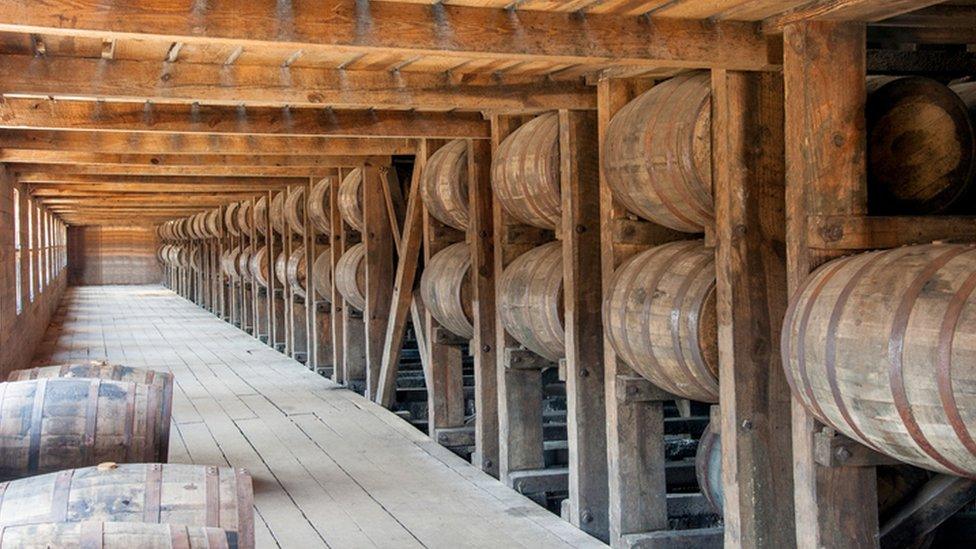Third of rare Scotch whiskies tested found to be fake
- Published
- comments
Vintage Scotch whiskies found to be fake
More than a third of vintage Scotch whiskies tested at a specialist laboratory have been found to be fake, BBC Scotland has learned.
Twenty-one out of 55 bottles of rare Scotch were deemed to be outright fakes or whiskies not distilled in the year declared.
The tests were conducted at the East Kilbride-based Scottish Universities Environmental Research Centre (SUERC).
It used advanced radiocarbon dating techniques to reach its conclusions.
SUERC measured residual concentrations of a radioactive isotope of carbon present in the alcohol contained in each bottle in order to establish the ages of the whiskies.
The samples had been sent for analysis by whisky broker Rare Whisky 101 (RW101), which said it was responding to "growing concern surrounding the proliferation of fake whisky" in the secondary market.
The bottles had been selected at random from auctions, private collections and retailers.
Last year, the same company exposed a £7,600 dram of vintage Scotch bought in a Swiss hotel as a fake.

RW101 has estimated that about £41m worth of rare whisky on the secondary market and present in existing collections is fake
The rare whisky bottles identified as fakes this year included an Ardbeg 1885, which had been acquired from a private owner, and a Thorne's Heritage early 20th Century blended whisky purchased from an auctioneer.
RW101 said a total of 10 single malts purporting to be from 1900 or earlier were found not to be genuine.
The company said that if tests had proven all 21 bottles to be genuine, collectively they could have been valued at about £635,000.
RW101 has estimated that about £41m worth of rare whisky which is currently circulating in the secondary market - and present in existing collections - is fake.
That is more than the entire UK whisky auction market, which RW101 has forecast will exceed £36m by the end of this year.
'Rogue elements'
RW101 co-founder David Robertson said "the vast majority" of vendors were not knowingly selling fake Scotch but every purported rare whisky bottle "should be assumed to be fake until proven genuine", especially if it claimed to be a single malt.
He added: "This problem will only grow as prices for rare bottles continue to increase.
"The exploding demand for rare whisky is inevitably attracting rogue elements to the sector."

A total of 55 samples of whisky were tested at the Suerc laboratory

How does carbon dating work?
By BBC Scotland science correspondent Kenneth Macdonald
The key to the dating process is an isotope - a variant - of carbon.
Carbon-14 is that element's only radioactive isotope and every piece of organic material - ourselves included - contains a tiny amount of it.
Its relatively slow rate of radioactive decay means it has a half-life of 5,370 years. In other words it takes that long for half of it to be gone.
Measuring how much Carbon-14 remains in a sample gives an accurate indication of how old it is.
How did it get there in the first place?
Cosmic rays are constantly bombarding our atmosphere.
When they interact with nitrogen, carbon-14 is created. It combines with oxygen to create a radioactive variant of carbon dioxide.
Plants then take in this radiocarbon. Animals, ourselves included, eat the plants and absorb it. When the plants, animals or we die that process stops.
But the carbon-14 goes on decaying, so a sample of organic matter like wood or bone will give an indication of when the plant or animal died.
Researchers are constantly refining the "calibration curve" of carbon-14 levels to give an more accurate indication of the age of a sample.
Techniques have been developed so that ever smaller samples can be dated.
- Published2 November 2017

- Published31 October 2017
